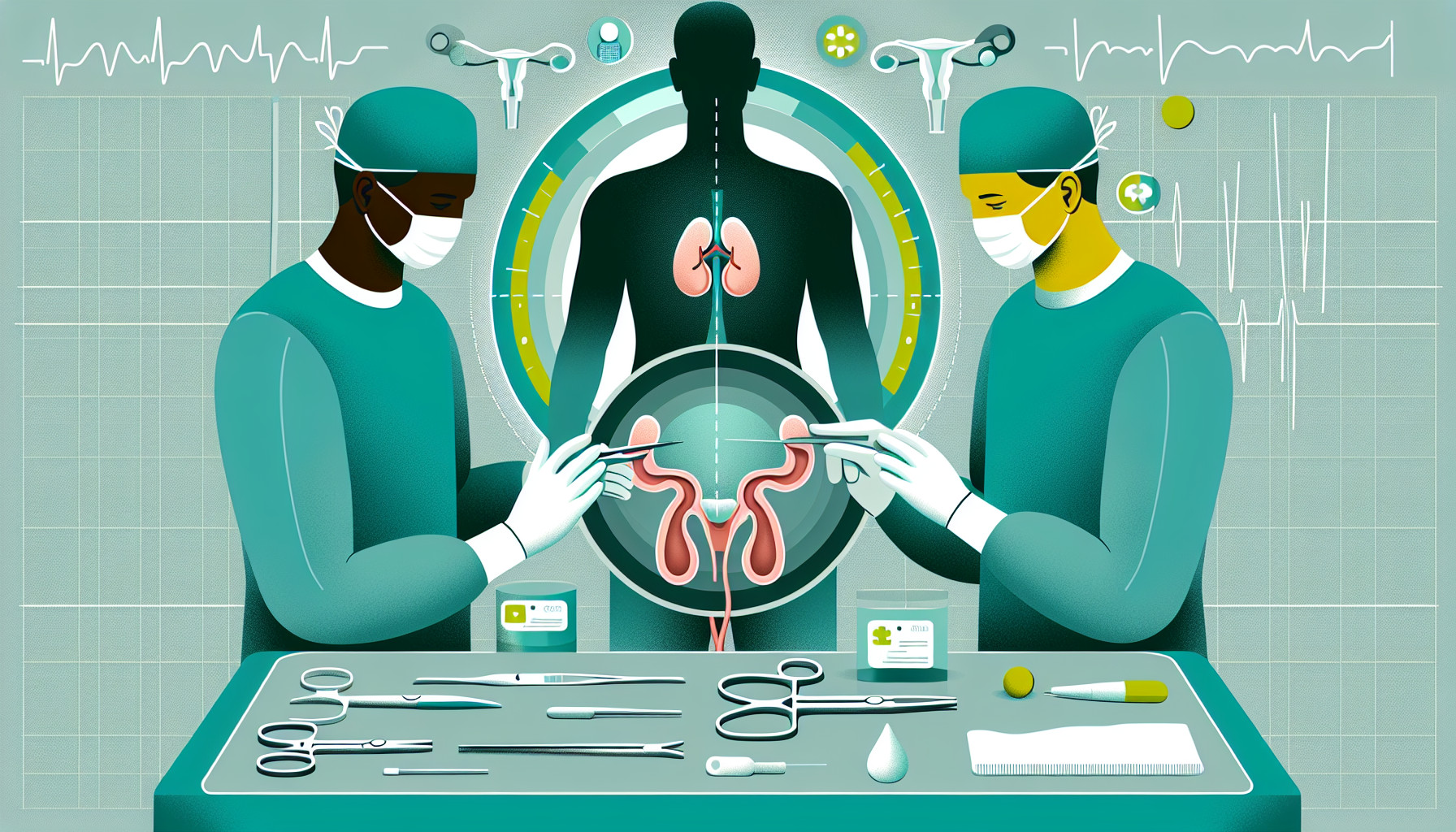Our Summary
This research paper is about the different surgical treatments for bladder cancer, specifically the ones that are very invasive or at high risk of spreading to other places. Currently, the standard treatment is a type of surgery called a radical cystectomy, which involves removing the bladder and nearby lymph nodes. This can be done in two ways: through an open surgery, which is more traditional and still widely used, or through minimally invasive procedures, either laparoscopic (using small incisions and a camera) or robot-assisted.
The paper compares these methods, looking at factors such as complication rates, blood loss, time spent in the hospital, and time spent in surgery. Open surgery is often quicker but tends to result in longer hospital stays and potentially more serious complications. On the other hand, laparoscopic and robotic surgeries usually involve less blood loss and a shorter hospital stay, but the actual surgery takes longer. However, the data doesn’t clearly show that these minimally invasive methods result in fewer complications after surgery compared to the traditional open method.
FAQs
- What is the standard treatment for localized muscle-invasive and high-risk non-muscle-invasive bladder cancer?
- How do the outcomes of laparoscopic or robot-assisted cystectomy compare to open surgical cystectomy?
- What are the potential benefits and drawbacks of laparoscopic and robotic radical cystectomy versus open radical cystectomy?
Doctor’s Tip
A doctor might tell a patient undergoing cystectomy to make sure to follow all post-operative care instructions closely, including taking prescribed medications, attending follow-up appointments, and avoiding heavy lifting or strenuous activities until cleared by the medical team. It is important to communicate any concerning symptoms or changes in health to the healthcare provider promptly. Additionally, maintaining a healthy lifestyle, including regular exercise and a balanced diet, can help promote healing and recovery after surgery.
Suitable For
Patients who are typically recommended for cystectomy include those with localized muscle-invasive bladder cancer, high-risk non-muscle-invasive bladder cancer, and those who have not responded to other forms of treatment. These patients may have aggressive or advanced disease that requires surgical intervention to remove the bladder and surrounding lymph nodes. Additionally, patients who are not candidates for other treatments, such as radiation or chemotherapy, may also be recommended for cystectomy. It is important for patients to discuss their treatment options with their healthcare provider to determine if cystectomy is the best course of action for their individual case.
Timeline
- Before cystectomy:
- Patient is diagnosed with localized muscle-invasive or high-risk non-muscle-invasive bladder cancer.
- Patient undergoes various tests and imaging studies to determine the extent of the cancer and whether cystectomy is necessary.
- Patient discusses treatment options with their healthcare provider and decides to undergo radical cystectomy.
- Patient undergoes preoperative preparation, which may include blood tests, imaging studies, and meeting with an anesthesiologist.
- After cystectomy:
- Patient undergoes the surgical procedure, which may be open, laparoscopic, or robot-assisted.
- Patient is closely monitored in the postoperative period for any complications or side effects.
- Patient may experience pain, discomfort, and fatigue in the immediate postoperative period.
- Patient begins a recovery process, which may include physical therapy, dietary changes, and lifestyle modifications.
- Patient may require a urinary diversion procedure to create a new way for urine to leave the body.
- Patient undergoes follow-up appointments with their healthcare provider to monitor their progress and address any concerns.
What to Ask Your Doctor
- What are the risks and potential complications associated with a cystectomy procedure?
- What is the expected recovery time and potential side effects following a cystectomy?
- Are there any alternative treatment options available for my condition?
- How many cystectomy procedures have you performed and what is your success rate?
- What are the long-term outcomes and prognosis for patients who undergo a cystectomy?
- Will I need any additional treatments or follow-up care after the cystectomy?
- What can I do to prepare for the surgery and optimize my recovery?
- What type of anesthesia will be used during the procedure and what are the potential risks associated with it?
- Will I need to make any lifestyle changes or modifications after the cystectomy?
- Are there any support groups or resources available for patients undergoing a cystectomy procedure?
Reference
Authors: Palazzetti A, Sanchez-Salas R, Capogrosso P, Barret E, Cathala N, Mombet A, Prapotnich D, Galiano M, Rozet F, Cathelineau X. Journal: Actas Urol Esp. 2017 Sep;41(7):416-425. doi: 10.1016/j.acuro.2016.05.009. Epub 2016 Nov 28. PMID: 27908634
